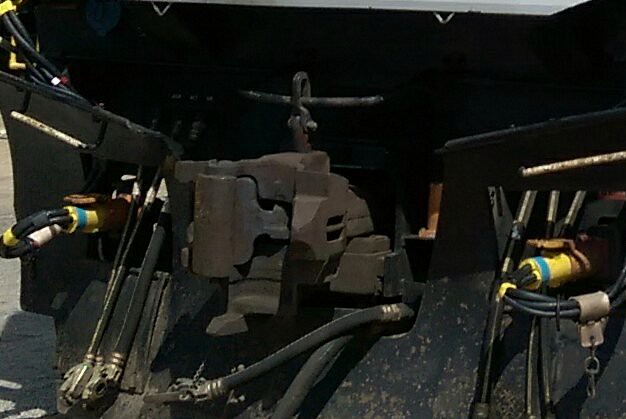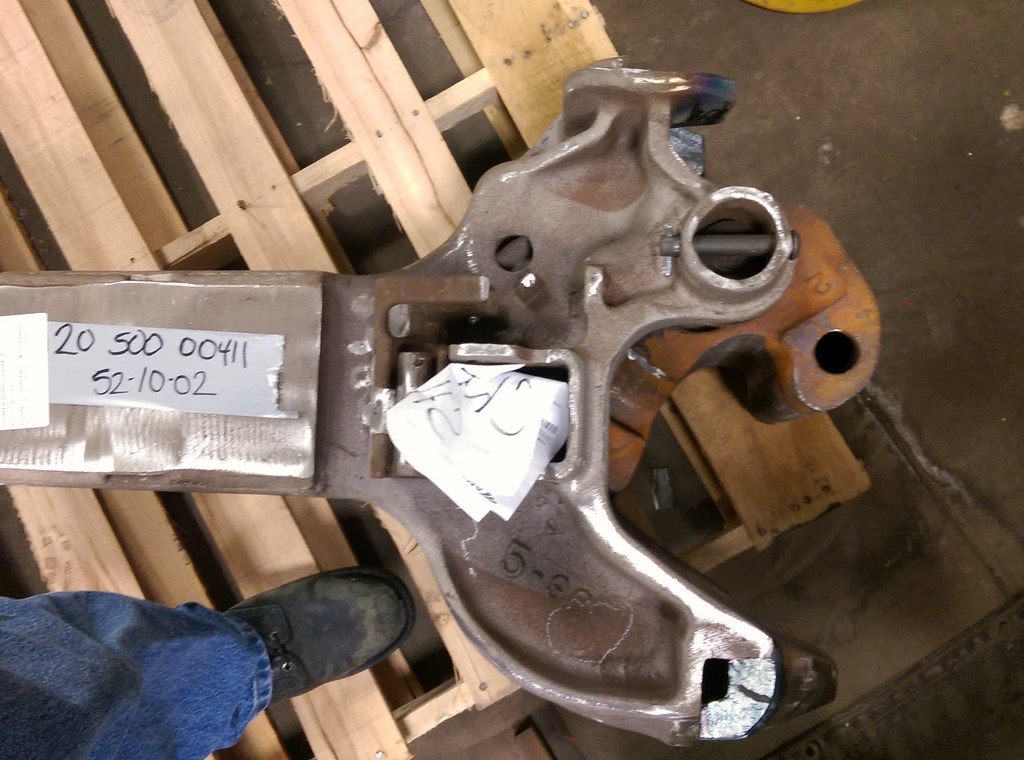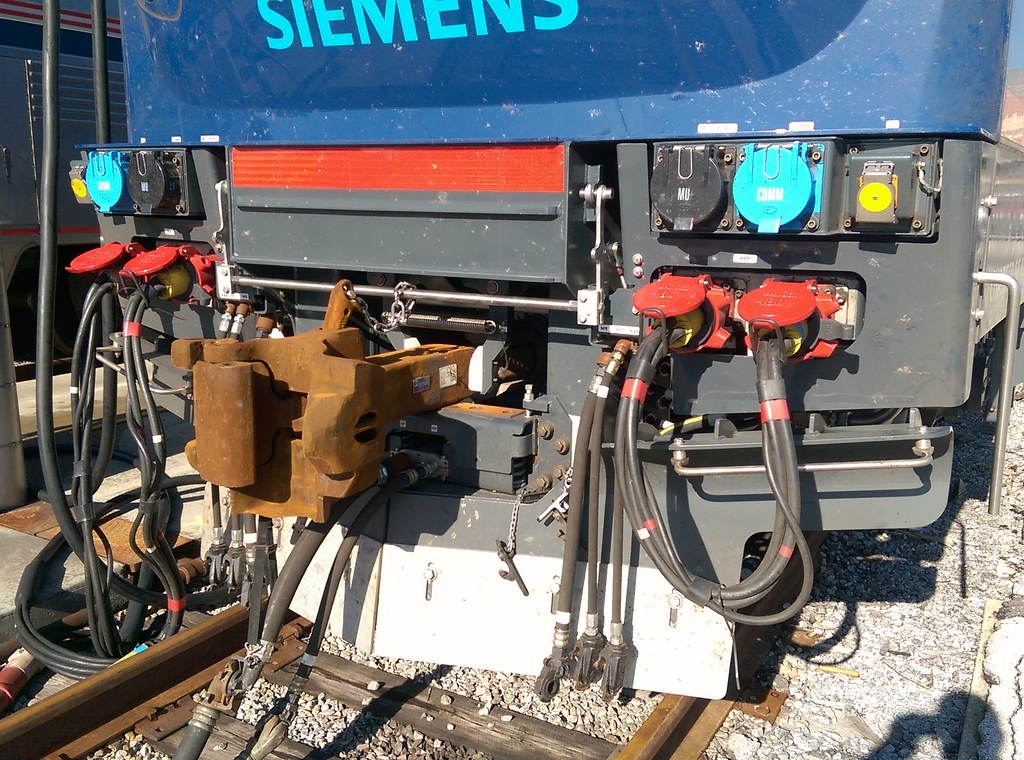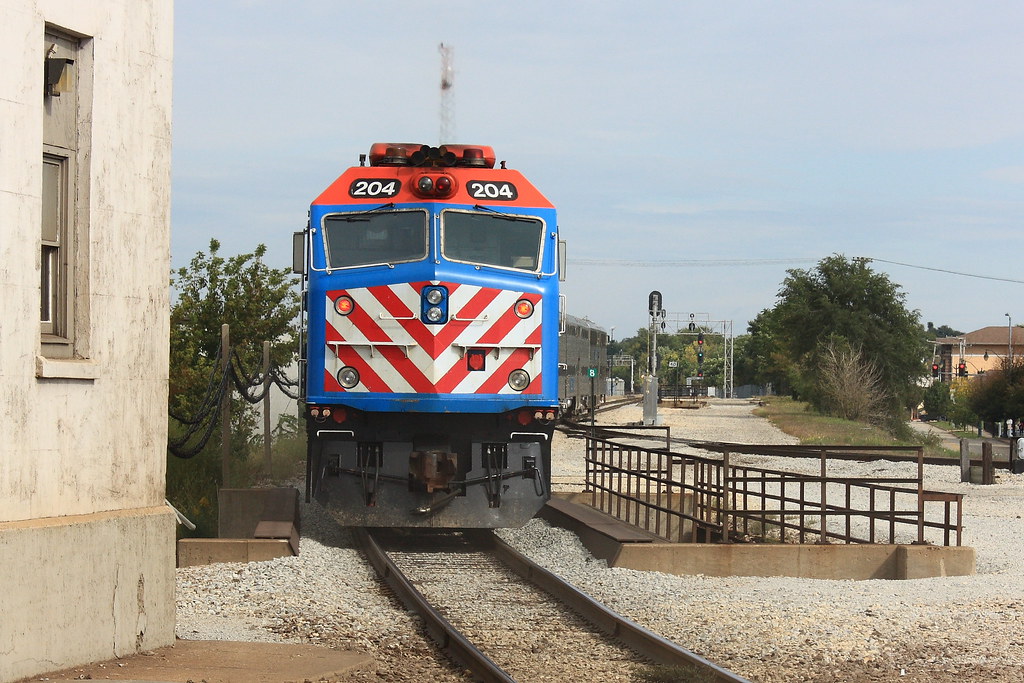Deleted
Deleted Member
Posts: 0
|
Post by Deleted on May 12, 2017 4:04:08 GMT -5
Where do i get scale couplers as i'm adding dw scale coupler buffer pockets to my GP40X build.
Thanks for any help.
|
|
EMDX6043
Chairman
Future ex-modeler
Posts: 847
|
Post by EMDX6043 on May 12, 2017 7:16:05 GMT -5
|
|
fr8kar
Chairman
Little man raise the cotton, beer joints get the money
Posts: 309
|
Post by fr8kar on May 12, 2017 11:35:40 GMT -5
I did the whole fleet a few years ago. I started off with a couple 144 packs of Es and lower shelf Es. I used to take the unassembled couplers and put them together in the hotel when I was on the road. Eventually I bought several packages of double shelf Es for the tank cars and Fs for certain locomotives. I have had good luck with the +.100 shank Es for autoracks and bulkhead flatcars and the short shank Es for some of my locomotives.
You'll notice a massive reduction in slack when you convert to these couplers. It's still there, but maybe a quarter of what you'd experience with Kadee couplers. The bounce you get with Kadees is gone, too. They're finicky when it comes to coupling, just like the prototype, but if you stay out of curves for coupling and uncoupling you shouldn't have many problems.
I have a few unit coal trains I fitted with Walthers dummy couplers since the train stays together all the time. These couplers do not mate with the Walthers dummy couplers. It's possible to file the Walthers dummy couplers so that they mate, but it's far easier to buy the dummy couplers Sergent sells. Or you could equip your coal trains with working couplers, but that will get expensive if you're modeling cars equipped with Type F couplers (I am, hence the dummy couplers).
Another word about the Type F couplers (and this includes the Type H): they are not very tolerant of imperfect track. Like the prototype, they interlock with each other and very little vertical movement is possible. A friend models passenger trains and uses the Type H couplers extensively. He experienced this problem and worked with me on designing a coupler box that allows some vertical movement. I printed some on Shapeways to test and they work well. I don't know how well they will hold up under heavy loads, though. I'm going to print some in another material soon to see if there's a difference in strength.
Good luck!
|
|
Deleted
Deleted Member
Posts: 0
|
Post by Deleted on May 12, 2017 15:38:24 GMT -5
Thanks gang
|
|
|
|
Post by nsc39d8 on May 12, 2017 17:49:44 GMT -5
I keep in touch with me on the coupler box for the passenger cars, I will be interested in them!
I am going to have to go back and add some F couplers as I noticed a lot of Southern's late power uses the F type.
|
|
dale
Superintendent
Posts: 157
|
Post by dale on May 12, 2017 19:29:50 GMT -5
Sergents rule.
|
|
fr8kar
Chairman
Little man raise the cotton, beer joints get the money
Posts: 309
|
Post by fr8kar on May 12, 2017 21:18:56 GMT -5
I keep in touch with me on the coupler box for the passenger cars, I will be interested in them! I am going to have to go back and add some F couplers as I noticed a lot of Southern's late power uses the F type. I used the box design on my radio cars since they have Type Fs. |
|
Deleted
Deleted Member
Posts: 0
|
Post by Deleted on May 12, 2017 22:24:03 GMT -5
I used the box design on my radio cars since they have Type Fs.[/quote]
Are you talking about the DP radio cars the southern used I need to build some of those.
? So would my 1978-80 GP40X need type F couplers being new to this i'm on a slow coupler learning curve.
I went to sergents site didn't realize the various coupler choices.
I know the shelf style for tanks and such just need to find out what i need for my power.
Thanks again
|
|
fr8kar
Chairman
Little man raise the cotton, beer joints get the money
Posts: 309
|
Post by fr8kar on May 13, 2017 11:15:18 GMT -5
Yes, those are the cars. I scratchbuilt one in the 90s then received one of the Wright Trak kits in 2002. Your best bet is to consult prototype photos. Here's a photo of the class unit in 1978: www.rrpicturearchives.net/showPicture.aspx?id=736110This locomotive is equipped with Type F couplers, which have a lower shelf and an interlocking tab and slot design on the sides of the coupler. During your modeling era, you could encounter both double shelf E and double shelf F couplers on tank cars. Double shelf F couplers were used up to the late 70s IIRC, but were phased out of production in favor of the double shelf E couplers. |
|
Deleted
Deleted Member
Posts: 0
|
Post by Deleted on May 13, 2017 11:57:54 GMT -5
Yes, those are the cars. I scratchbuilt one in the 90s then received one of the Wright Trak kits in 2002. Your best bet is to consult prototype photos. Here's a photo of the class unit in 1978: www.rrpicturearchives.net/showPicture.aspx?id=736110This locomotive is equipped with Type F couplers, which have a lower shelf and an interlocking tab and slot design on the sides of the coupler. During your modeling era, you could encounter both double shelf E and double shelf F couplers on tank cars. Double shelf F couplers were used up to the late 70s IIRC, but were phased out of production in favor of the double shelf E couplers. That helps a lot and even the right unit way cool. Never noticed the lower shelf till now in that pic thank you so much |
|
EMDX6043
Chairman
Future ex-modeler
Posts: 847
|
Post by EMDX6043 on May 13, 2017 16:25:15 GMT -5
If the 7000 has AAR type F couplers, what's the difference between those and a Type H Tight-lock? Knuckle thickness?? The drawbar aka coupler castings look almost identical to me. Yes, those are the cars. I scratchbuilt one in the 90s then received one of the Wright Trak kits in 2002. Your best bet is to consult prototype photos. Here's a photo of the class unit in 1978: www.rrpicturearchives.net/showPicture.aspx?id=736110This locomotive is equipped with Type F couplers, which have a lower shelf and an interlocking tab and slot design on the sides of the coupler. During your modeling era, you could encounter both double shelf E and double shelf F couplers on tank cars. Double shelf F couplers were used up to the late 70s IIRC, but were phased out of production in favor of the double shelf E couplers. |
|
fr8kar
Chairman
Little man raise the cotton, beer joints get the money
Posts: 309
|
Post by fr8kar on May 13, 2017 16:32:05 GMT -5
Glad to help. When I started as a conductor I picked up on the differences pretty quick. It helps to know what you're looking at because an E knuckle won't fit into an F coupler and vice versa. Seeing somebody wrestle with the wrong knuckle will tire you out just watching. It's definitely no fun if it's you messing with the knuckle. I had a rough week one November: I had non-waterproof boots and a jacket when it started freezing rain and I had to change two knuckles in icy/snowy conditions. I bid on the next engine class and never looked back.
Generally, you're going to want a whole bunch of Type E couplers with the standard shank. Good for most locomotives, autoracks, intermodal equipment, flatcars, gondolas and boxcars. Next most common (unless you have a ton of tank cars) is the bottom shelf E coupler, which can be found on open hoppers, covered hoppers, bulkhead flats, boxcars, and many locomotives. Double shelf Es are mandatory on tank cars, except those built in the 70s already equipped with double shelf Type F couplers. You can also find them on some reefers and covered hoppers (usually pellet hoppers).
Lower shelf Fs are standard on many cars, including pretty much all rotary coal gondolas, many BN and most BNSF locomotives, as well as certain newer covered hoppers intended for unit train service. If it's a rotary coal hopper, it's got Type F couplers, but this is not true for all newer coal hoppers. The RDVI coal hoppers in the TXU fleet, for example, have lower shelf E couplers.
Again, just check prototype photos and you'll see the patterns emerge. Check the date of those photos, too, because it's not uncommon for the couplers to be changed out over the life of a car. What you'll almost never see is a car switched from E to F or vice versa, but it does happen. Intermodal equipment was originally equipped with Type F couplers, but that's changed to E couplers over time. Check out open autoracks, for example. Many have Type F couplers.
I started off with the bulk packs of standard E couplers and filled in the rest of the fleet with the specialty couplers as they became available (I waited over a year for the double shelf Es to restock). If you displace some standard E couplers as you buy the specialty couplers hang onto them - you'll eventually buy something that needs them!
|
|
fr8kar
Chairman
Little man raise the cotton, beer joints get the money
Posts: 309
|
Post by fr8kar on May 13, 2017 16:56:03 GMT -5
If the 7000 has AAR type F couplers, what's the difference between those and a Type H Tight-lock? Knuckle thickness?? The drawbar aka coupler castings look almost identical to me. The couplers are definitely different and E, F and H all require their own knuckles. Here's a handout from work that shows how to identify the differences:  Here's a head-on view of a Type H coupler: www.railpictures.net/viewphoto.php?id=450959&nseq=11There's no shelf under the coupler like you see on the Type F coupler in the GP40X image. You can see the male alignment tab on this coupler appears to be a separate part, too, as if it's designed to be replaced after being worn. I don't know if that's a result of the silver paint coming off or if it is a part designed for wear (I'll look for a more clear photo). I've only handled passenger equipment in a couple special moves, so it's definitely not my specialty: condrenrails.com/ATSF/ATSF-312-Ft-Worth-TX-6-23-73.jpgHere's a similar view of a Type F equipped locomotive where the entire drawbar/coupler is a single casting: www.american-rails.com/images/LTESCELCAPLAL.jpg |
|
EMDX6043
Chairman
Future ex-modeler
Posts: 847
|
Post by EMDX6043 on May 13, 2017 18:35:29 GMT -5
Hmm...I guess I've had the wrong impression, thinking that anything with the "spear" under the head and the side tab/slot is a Type H Tight-Lock.  Above-what I thought was a Type H Tightlock with shelf and "spear" (AMTK 406, former F40PH) Above-what I thought was a Type H Tightlock with shelf and "spear" (AMTK 406, former F40PH)
 Type H (no shelf, no spear) Type H (no shelf, no spear)
 Type F? (Shelf, no "spear") Type F? (Shelf, no "spear") Type F, Shelf & "spear" Type F, Shelf & "spear"All but the last Metra photo were taken within the last year at work. I found some info on the Columbus Castings website about the different types, so it makes sense now. I admit I just never looked into it that much. I only ever changed one knuckle as a conductor (probably 9 years ago)...we also got a drawbar from that same emergency application. And it was about 5 degrees that night... |
|
Deleted
Deleted Member
Posts: 0
|
Post by Deleted on May 13, 2017 18:43:55 GMT -5
The couplers are definitely different and E, F and H all require their own knuckles. Here's a handout from work that shows how to identify the differences:  Here's a head-on view of a Type H coupler: www.railpictures.net/viewphoto.php?id=450959&nseq=11There's no shelf under the coupler like you see on the Type F coupler in the GP40X image. You can see the male alignment tab on this coupler appears to be a separate part, too, as if it's designed to be replaced after being worn. I don't know if that's a result of the silver paint coming off or if it is a part designed for wear (I'll look for a more clear photo). I've only handled passenger equipment in a couple special moves, so it's definitely not my specialty: condrenrails.com/ATSF/ATSF-312-Ft-Worth-TX-6-23-73.jpgHere's a similar view of a Type F equipped locomotive where the entire drawbar/coupler is a single casting: www.american-rails.com/images/LTESCELCAPLAL.jpg[/quote] Thanks a ton didn't realize that much difference in the knuckles. We didn't touch any couplers on site r.i.p crew,when i was a power rat on the work/ballast train back in 1990-91 worked Mech' tie gang 6. Was nice being able to notch out the old gp9's or gp10's trail braking the cars what fun. Those were the days. |
|
|
|
Post by nsc39d8 on May 13, 2017 19:25:49 GMT -5
I am not quite through studying the Southern couplers but do know that the SD40-2's, GP39X, GP40X, GP50's have type F. I am not sure about the SD45's or earlier power. From what I gathered Southern's thought was the type F would keep the power coupled together in a derailment where the power just went to the ground with no roll over.
Ryan, Thanks for the Info! Are those parts on your Shapeways site?
|
|
Deleted
Deleted Member
Posts: 0
|
Post by Deleted on May 13, 2017 19:50:48 GMT -5
I am not quite through studying the Southern couplers but do know that the SD40-2's, GP39X, GP40X, GP50's have type F. I am not sure about the SD45's or earlier power. From what I gathered Southern's thought was the type F would keep the power coupled together in a derailment where the power just went to the ground with no roll over. Ryan, Thanks for the Info! Are those parts on your Shapeways site? Yes i looked at a bunch of souther unit's today and the F was on several 70's era units |
|
fr8kar
Chairman
Little man raise the cotton, beer joints get the money
Posts: 309
|
Post by fr8kar on May 13, 2017 21:55:07 GMT -5
I am not quite through studying the Southern couplers but do know that the SD40-2's, GP39X, GP40X, GP50's have type F. I am not sure about the SD45's or earlier power. From what I gathered Southern's thought was the type F would keep the power coupled together in a derailment where the power just went to the ground with no roll over. Ryan, Thanks for the Info! Are those parts on your Shapeways site? Yes, it's for sale in the couplers and trucks section. Looking at it now I think I'm going to make a minor revision to the alignment ridge around the hole for the screw. IIRC, the tolerances were so tight that some of the printed parts required a little material removal to get them to fit perfectly. I'll take a look at this after everyone goes to bed tonight... In the meantime, I've enabled Hi-def acrylate as a material. I think this might be a better/stronger material than the frosted acrylic, but that's just a guess until I have parts in the different materials to compare side by side. |
|
|
|
Post by nsc39d8 on May 14, 2017 16:49:36 GMT -5
Ryan,
Let me know when the revision is finished. How about revising the NS C36-7 radiator for Southern's B30-7A1, will save me a lot of work on that model.
|
|
fr8kar
Chairman
Little man raise the cotton, beer joints get the money
Posts: 309
|
Post by fr8kar on May 14, 2017 16:57:00 GMT -5
Ryan, Let me know when the revision is finished. How about revising the NS C36-7 radiator for Southern's B30-7A1, will save me a lot of work on that model. Will do. Do you have any data on the Southern units that will illustrate the difference between the radiator sections? I'm away from my computer and books right now. |
|